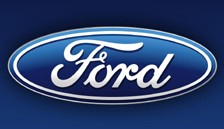In every industry, the market leader tends to be the pricing leader. The strongest company puts a price up and then everyone else gratefully follows.
In the UK car market, that mantle falls to Ford – the company has always led other volume car manufacturers (actually that is not quite true, as back in the 1970s and early 1980s, the car companies rang each other up and discussed how much they would increase prices. Just the thought of that happening today would give corporate lawyers a nervous breakdown).
However, this year Ford is not so much leading the other car manufacturers as sprinting away from them with the odd backward glance to see if anyone is following.
On December 1, there was yet another price rise of 2.5%. The timing was interesting: Ford did not want the price rise to coincide with the VAT increase on January 1, which would have given a headline price increase of 5%. That might have been a sensible move in its own right, but it still means that, since late 2008, Ford cars have gone up by an average of about 20%.
Ford points out that sterling has dropped 30%, so it is still protecting the consumer. That is as may be, but the cheapest Fiesta is now £11,295 and the cheapest Focus is an amazing £17,495.
The new Fiesta has been a smash hit and Ford here believes word-of-mouth recommendations from happy buyers will provide further momentum in 2010, but this is a very price-sensitive sector. The Fiesta is currently around 10% more than an equivalent Polo.
Meanwhile the Focus is more expensive than either the new Astra or the new Golf. The Focus is a great product, but it is well into middle age now and pricing it above VW is brave indeed.
Ford thinks the German companies have hedged more heavily than Ford and can support cheaper UK prices for a while, but ultimately they will have to come into line.
Logically that may be true, but the arbiter of prices is not an accountant; it is the consumer. Retail buyers have been taking a greater share of Ford custom in recent years, but there has to be a limit to what they are prepared to pay. Ford has done a good job of cutting back on discounts and getting transaction prices closer to list prices over the last three years.
If other manufacturers do not follow Ford’s lead, that progress must be under threat with such an aggressive pricing policy.
Ford marches up the hill
- By
- |
- 23 December 2009
- News














Login to comment
Comments
No comments have been made yet.